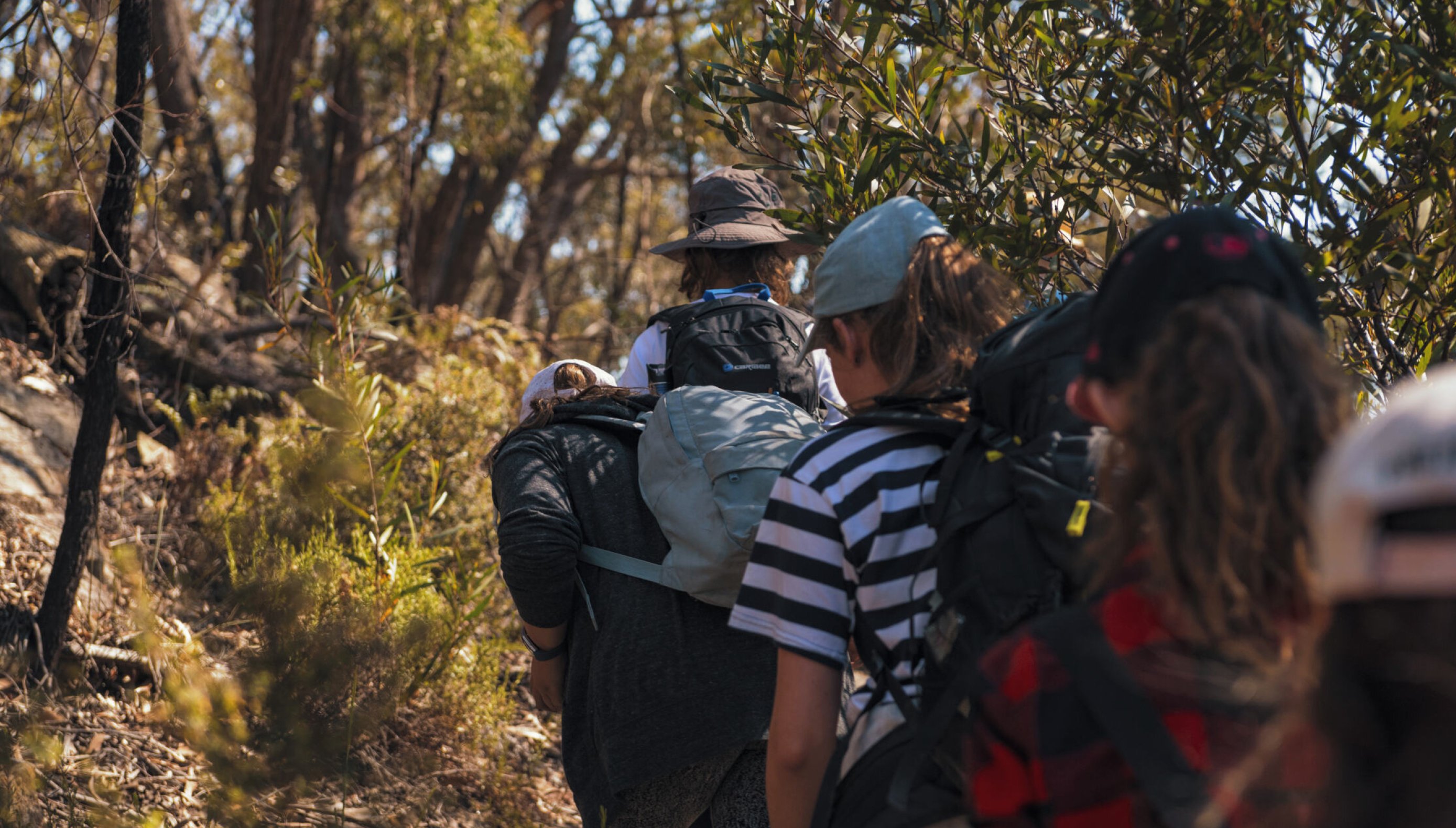In a time when we are more keenly aware of our impact on nature and are actively looking for opportunities to repair the damage already done, it is more important than ever that emerging generations connect to their natural world. After all, the lasting effects of how we treat our environment in these crucial years will affect them significantly.
Thankfully, emerging research in Australia and abroad is teaching us that we don’t necessarily have to teach every young person how to change the world in order to make a difference. The key is the link between outdoor Experiential Education programs and their ability to foster environmental stewardship. Put simply, it is up to us to get young people into nature in ways they can engage with and appreciate the value in their natural world so they may connect with it enough to care for it.
THE IMPORTANCE OF ENVIRONMENTAL AWARENESS
We live in a world with a rapidly changing climate, significant rate of development and an unsustainable attitude to natural resources. Despite Australia boasting around 600,000–700,000 native species (largely found nowhere else in the world) many species are now listed either as threatened, or in a higher category of threat (e.g. from Vulnerable to Endangered to Critically Endangered) than 5 years ago – an increase of 8% since 2016.
The 2022 Mission Australia Youth Survey shows 26% of young people in Australia are ‘very’ or ‘extremely concerned’ about climate change and The 2022 Youth Survey found that half of respondents identified ‘the environment’ as one of the most important issues in Australia today. It is clear that many young people, on some level, understand the need for action on environmental issues.
Studies have also shown that the perception of oneself as “connected” to nature is a major predictor of pro-environmental attitudes and behaviours. It will also come as no surprise that prolonged and frequent contact with nature is the best way to increase that feeling of connection to nature.
THE MECHANISMS BEHIND THE CONNECTION
Experiential Learning is a methodology used for imparting contextually relevant knowledge in a way where students are in direct contact with key learning concepts. In a standard school learning environment, a student may read, talk, listen and even be assessed on topics relating to their environment within a classroom but never come into contact with an animal, touch a tree or peer into a creek.
HANDS-ON LEARNING AND ITS ROLE IN KNOWLEDGE RETENTION
In Experiential Learning, the point is to actually interact with a subject, often bringing in theory to involve problem solving, critical reflection, discussion, and decision-making in real-life practice. This allows for a higher level of engagement, retention and a deeper understanding of concepts as students have the opportunity to learn in a variety of different ways and settings.
The power of Experiential Learning is in its ability to create students who are true stewards of their environment and their own learning. This is achieved with well facilitated, student-led experimentation, experience, reflective observation and abstract conceptualisation. The beauty of prolonged facilitated outdoor education (through sequenced programs) is - the older the student gets, the less facilitation is required.
The more ownership a student has over their education, the more engagement we typically see in an outdoor education setting. If the work students are doing is both meaningful and helps further their education, the higher the chance of that student continuing to care and feel connected to nature in their future.
WHERE TO FROM HERE
The vast majority of Australians have only fairly traditional schooling options. Some are fortunate to live in areas where robust nature play and outdoor education programs are a part of the standard curriculum, but that isn’t the case for most.
This is why relationships between outdoor education providers and education institutions are so vital. Whether it’s with university institutions to provide direct pathways for those seeking a career as an outdoor educator, or with schools to create sequenced programs for the length of students’ schooling lives that are intertwined with what they’re learning in the classroom.
The beauty of these partnerships is that it alleviates the pressure of a school being expected to give a student everything they need to become the best possible adult. After all, it takes a village to raise a student and sharing the load means they are afforded the best opportunities both in the classroom and in their environment.
To learn more about how your school could being the work to foster environmental stewardship in emerging generations, reach out to us today.
